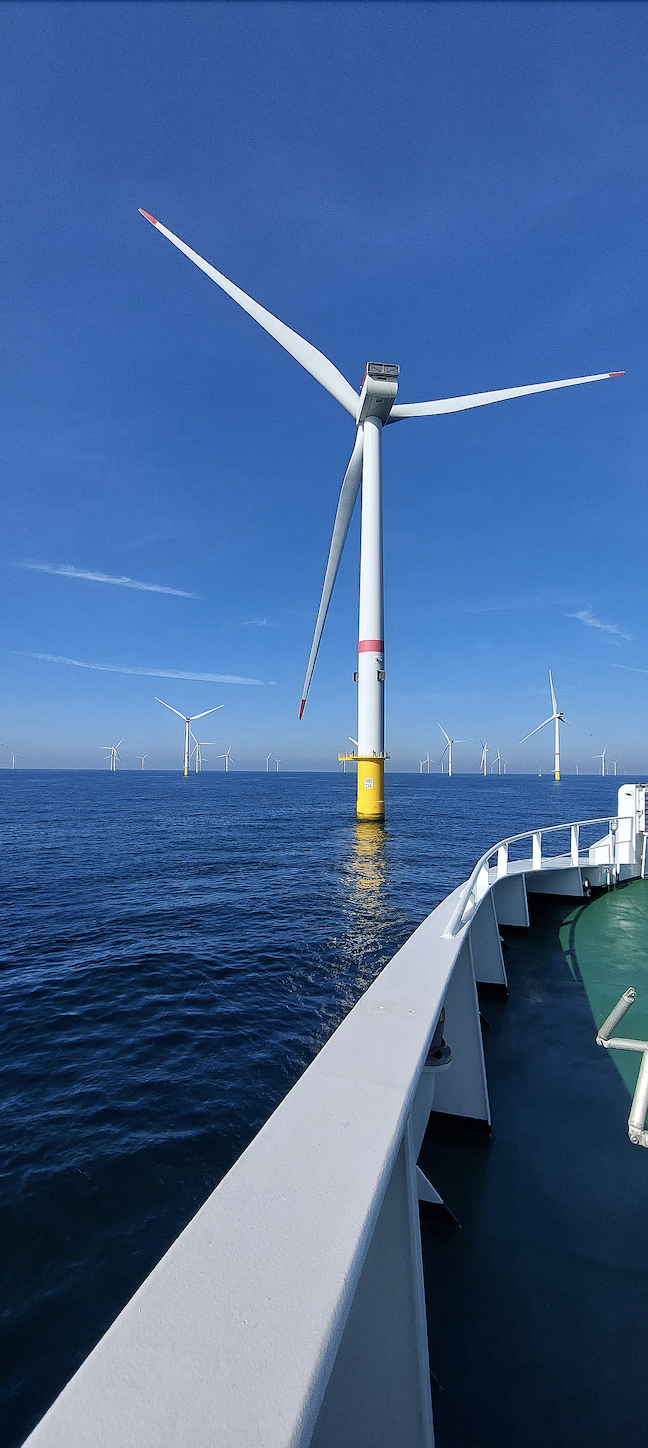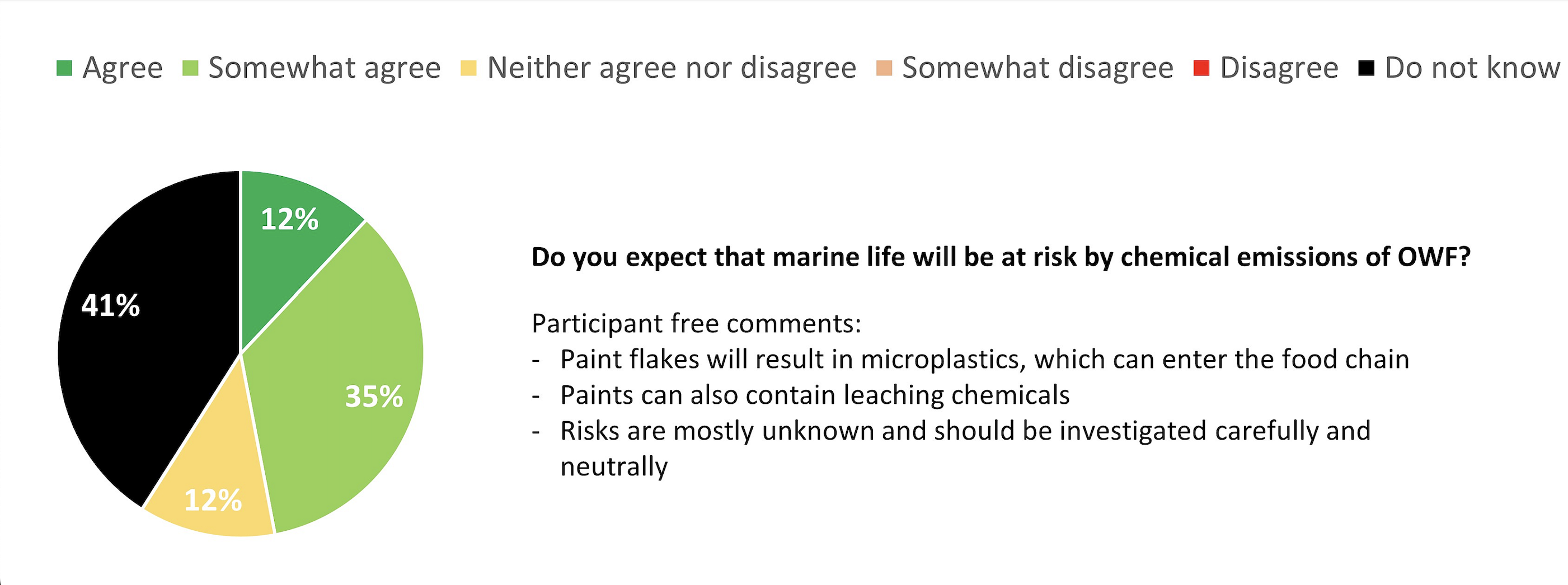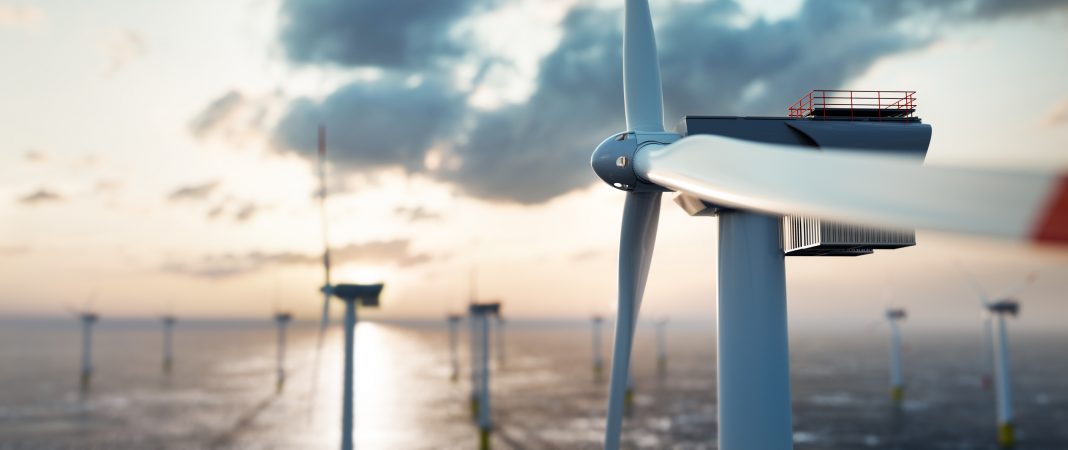Coordinator of the Anemoi project, Bavo De Witte (ILVO), discusses the path to minimal chemical pollution and increasing the sustainability of offshore wind energy
Offshore wind energy production is a relatively sustainable yet fast-growing industry, contributing to the UN development goals on green energy and climate actions. Europe’s total offshore wind power capacity as of September 2023 is 32 GW (1), only 20% of the European target to produce >150 GW by 2030.

The vast increase in offshore energy production urged different European countries to monitor the potential effects of offshore wind farms (OWFs) on the marine ecosystem, including the impact of underwater noise, the introduction of novel habitats, and the exclusion of fisheries. However, the potential risk of chemical emissions by OWF structures remains largely unknown though estimated to be small.
Effects of offshore wind farms on the marine ecosystem
Both adverse and beneficial effects have already been recorded. Noise from piling activities disturbs marine mammals during construction, while the rotor blades of operational OWFs exert collision risks for seabirds and bats.
These effects are partly mitigated by applying noise reduction technologies and by leaving a bigger distance between the individual turbines or adapting the rotor blades’ length to the birds’ average flight height. (2)
On the beneficial side, introducing three-dimensional hard substrates (piles and scour protection layers) in offshore waters leads to the creation of artificial reefs. Combined with a fishery exclusion effect, a more diverse marine ecosystem with enhanced biomass may develop in the OWFs. For example, significantly more European plaice (a commercial fish species) were recorded in a Belgian OWF. This could be related to an artificial reef effect and the higher availability of hardsubstrate prey organisms. (3, 4)
Potential risks of chemical emissions from OWFs
Over the past few years, awareness has grown that too little is known about the potential risks of chemical emissions from OWF structures. Chemical emissions may be subdivided into three groups: metals, organic chemicals and particulates.
The bases of the OWF piles are steel constructions, which require corrosion protection systems. Galvanic anodes release >2,100 kg of anode material in the marine environment per single monopile over a 27-year lifespan (5), resulting in a continuous emission of metals such as aluminium, zinc or indium. (6) But less emitting protection systems are also used and preferred.
Organic chemical emissions are expected from different sources, including leaching from paints, the accidental spills of transformer and lubrication oils, and fire extinguishing agents. (7) Particulate emissions derive from the release of paint flakes and the abrasion of small composite and plastic parts from the rotor blades, resulting from the sometimes harsh weather conditions.
To the best of our knowledge, no significant risks from OWF chemical emissions for the marine ecosystem have currently been identified. Nevertheless, scientists and representatives of the offshore wind farm industry indicate that a certain effect on marine life is expected (Fig. 2).

Anemoi: Increasing knowledge, bringing forward solutions
In February 2023, the Interreg North Sea Region project Anemoi started, building on the pioneering work of the OffChem project that mainly focused on metal emissions of OWFs in Germany. (8) The first aim of the Anemoi project is to measure and model the occurrence of metal, organic chemicals and particulate emissions at and around OWFs in different European countries.
The second aim is to compare these emissions with concentrations at which no effects are expected through ecotoxicity assessments. Next to risk assessments for individual chemical compounds, mixture toxicity will also be assessed, as leachates from OWFs mainly consist of a multitude of chemical compounds.
Anemoi also focuses on environmental regulations. Currently, different rules on chemical emissions are in place at national and European levels. An aligned regulatory framework will be proposed to reduce and mitigate the potential impact of chemical emissions from OWFs.
Also, the relative share of chemical emissions from OWFs needs to be weighed against other marine-based sources, such as shipping or oil and gas installations. Finally, Anemoi investigates sustainable and non- harmful solutions and optimisations, e.g., alternative corrosion protection systems. A firm collaboration in an interactive framework between scientists, the offshore wind sector and policymakers is critical to reaching the project goals.
References
- Windeurope, 2023. Key elements for offshore wind auction design. Position paper.
- Degraer et al., 2022. Environmental impacts of offshore wind farms in the Belgian part of the North Sea: getting ready for offshore wind farm expansion in the North Sea. Memoirs on the Marine Environment. Brussels: Royal Belgian Institute of Natural Sciences, OD Natural Environment, Marine Ecology and Management, 106 pp
- Buyse et al., 2022. Offshore wind farms affect the spatial distribution pattern of plaice Pleuronectes platessa at both the turbine and wind farm scale. ICES Journal of Marine Science, 0, 1-10.
- Buyse et al., 2023. Increased food availability at offshore wind farms affects trophic ecology of plaice Pleuronectes platessa. Science of the Total Environment, 862, 160730.
- Reese et al., 2020. Characterization of alloying components in galvanic anodes as potential environmental tracers for heavy metal emissions from offshore wind structures. Chemosphere, 257, 127182.
- Ebeling et al., 2023. Investigation of potential metal emissions from galvanic anodes in offshore wind farms into North Sea sediments. Marine Pollution Bulletin, 194, 115396.
- Kirchgeorg et al., 2018. Emissions from corrosion protection systems of offshore wind farms: evaluation of the potential impact on the marine environment. Marine Pollution Bulletin, 136, 257-268.
- https://www.hereon.de/institutes/coastal_environmental_chemistry/inorganic_environmental_chemistry/projects/OffChEm/index.php.en


This work is licensed under Creative Commons Attribution-NonCommercial-NoDerivatives 4.0 International.


